Change language: Dutch (Nederlands) ![]()
Monza, the legendary high speed track and home of the Italian Grand Prix. On this page I’m going to tell you the story of the iconic Monza banking. Actually, when we talk about the Monza Oval we are talking about two different ovals: the pre-war oval and the post-war oval…
The origination of the “Autodromo Nazionale di Monza”
After a construction time of only 100 days, the Monza circuit opened in 1922. It was initiated by the Automobile Club di Milano (ACI). Prior to this, the Italian car manufacturers already wanted a permanent circuit in Italy to test their cars.
After Brooklands and Indianapolis, the “Autodromo Nazionale di Monza” (which is still its official name) was the third purpose-built race track in the world.
The layout of the original Monza circuit
The original Monza circuit was exactly 10 kilometers (6.2 miles) long and included two loops. The first loop was a 5.5 kilometer long (3.4 mile long) road circuit. The second loop was a 4.5 kilometer (2.79 mile) high banked oval.
Most remarkable was the fact that they crossed the start/finish line twice each lap. The start/finish straight was twice the width of the track elsewhere at the circuit. When they entered the oval, they drove on the right side of the straight. Coming from the southern banking of the oval, they entered the straight on the left side and continued onto the road circuit.
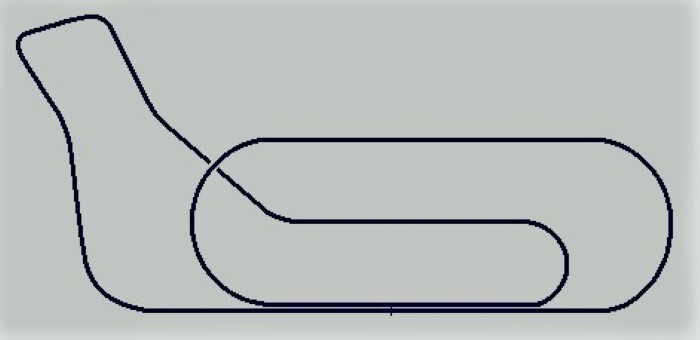
The road circuit is still in use today, but in modified form. Prior to this, the track contained fast corners and long straights. Later, the chicanes and the Parabolica were added to the circuit. Also, the Lesmo Corners have been modified twice (in 1938 and 1994).
The oval contained two banked corners with a 21-degree banking. Both corners had a radius of 320 meters (1,050 feet) and were designed for a speed of 180 km/h (112 mph). The corners were connected by two straights measuring 1.22 kilometers (4,003 feet), with the start/finish straight also forming the connection with the road circuit.
Changes to the Monza circuit
The first changes to the Monza circuit layout came after a fatal accident in 1928. During that year’s Italian Grand Prix the Italian driver Emilio Materassi crashed during an attempt to catch up to Giulio Foresti’s Bugatti on the main straight.
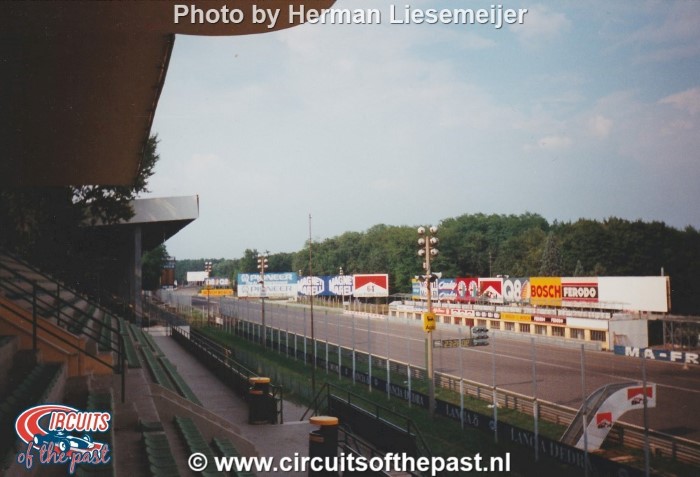
Materassi’s Talbot plunged into the nearby spectators. Both Emilio Materassi and more than 20 spectators died. However it was not on the oval, it lead to the closure of the oval loop to reduce the high speeds on the main straight.
Florio Circuit
In 1930 Vincenzo Florio, president of the Automobile Sports Commission, came up with the idea for a new layout, using the existing infrastructure of the circuit. A short straight and two rectangular corners connected the central straight and the oval. In this version only the Southern banking was used, with a chicane at 2/3rd of the corner. This layout was called the Florio Circuit.
The last Grand Prix at the original Monza track
After an absence of two years, the Italian Grand Prix returned to the full 10 km circuit in 1931. The last time the original Monza track was used was in 1933. Three drivers tragically died during the 1933 race.
It happened during the Monza Grand Prix, which was a race after the Italian Grand Prix. This race was held on the oval only, which was driven clockwise, just like the full circuit.
The legendary Italian driver Giuseppe Campari would retire after this race. Unfortunately, it would be his farewell in another way… First, both Campari and his Italian teammate Baconin Borzacchini crashed on the southern banking and died.
After the restart, Polish driver Stanislaw Czaykowski also crashed and died at the same location. According to some sources, the accidents were caused by oil on the track.
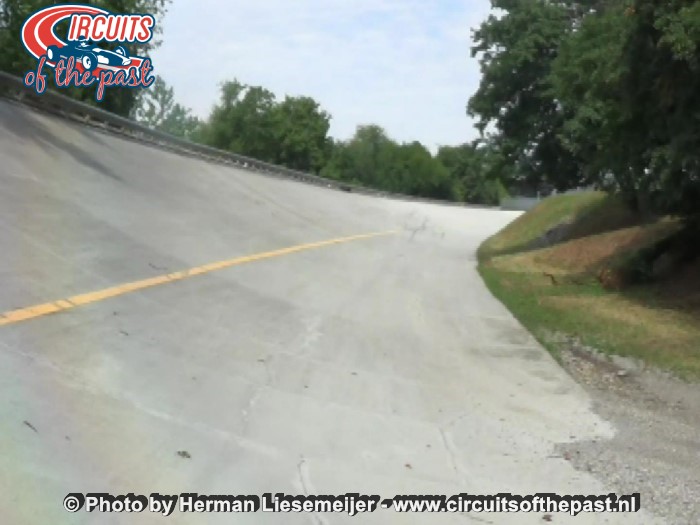
The slowest Monza layout ever
After the 1933 tragedy, they again looked for an alternative layout to the fast Monza circuit. For the 1934 Italian Grand Prix, a very slow layout was designed and built using some of the existing circuit. At the end of the main straight there was now a hairpin, which took the drivers to the other half of the main straight and drove back in the opposite direction.
Some people said they chose this slow layout to help the Italian cars against the German cars (who were very fast on the straights).
Over the next few years, they used the Florio Circuit again, but now with four additional chicanes. They brought the number of chicanes at Monza to five.
The first big renovation of the Monza circuit
After the 1938 Italian Grand Prix, a major reconstruction of the Monza Circuit was begun. This meant the definitive end of the original circuit. The disused oval was demolished, and the corner between the central straight and the main straight was replaced by two rectangular corners. The new track was 6.3 km (3.9 miles) long. It also included new pit facilities and a new 2000-seat grandstand with a restaurant.
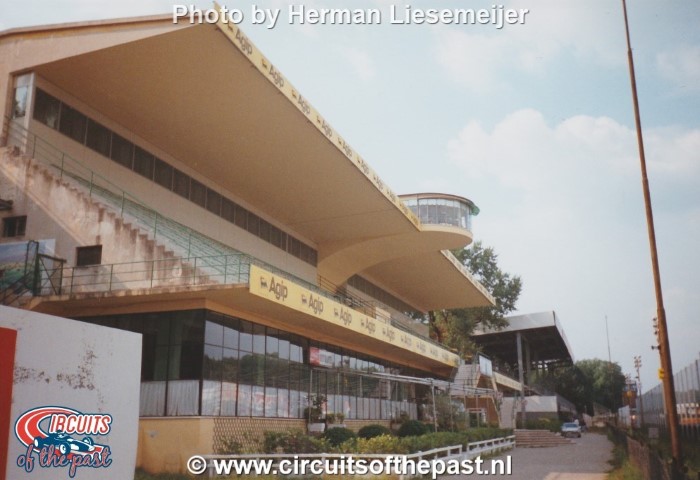
Pirelli Track
Commissioned by Pirelli, a new test track was also constructed. It would be remembered as the Pirelli Track. However, because of the outbreak of World War Two, it was never used for its purpose.
The Pirelli Track used a part of the existing circuit. Just before the Curva Grande it turned right to the new section. A short straight led to the Curva Nord Est (Northeast Corner). This corner in turn led to a very long straight that connected with the Rettfilio Centrale (Central Straight). But to connect it properly they had to move the original Rettfilio Centrale several tens of meters westward. The original Rettfilio Centrale is still there, parallel to the new central straight.
By the way: In 2016 the abandoned Pirelli Track was back in the spotlight when they came up with an alternative layout for the World Superbike Race. The new section should cut off the Curva Grande and make usage of a part of the Pirelli Track. A new chicane should bring it back to the normal track.
Rumors circulated on the Internet that Bernie Eccelstone (he was still the boss at that time) would be interested in using this layout for Formula One as well. A massive protest arose under the slogan “Save Curva Grande”. However, the idea disappeared as quickly as it came.
After World War Two
The huge renovation of the late 1930s was completed in 1940. However, because of the outbreak of World War Two, the renovated track was not used and fell into decay. After the war it was used by the Allies as a place to store army vehicles. This caused damage to the track, so another renovation was necessary.
They started the renovation in 1948 and it was completed in a record time of less than two months. On October 17, 1948, the first post-war race was held at Monza: the Autodrome Grand Prix. This was a Formula Race, but it didn’t count toward the World Championship (which only started in 1950).
The return of the Monza Oval
In 1955 it was time for yet another renovation. The owners wanted to return to the original concept of a combination of a road circuit and a high speed track. The new southern banking was built north of its original location. That was because of a planned tunnel underneath the track. This also made the straights a little shorter, compared to the original circuit.
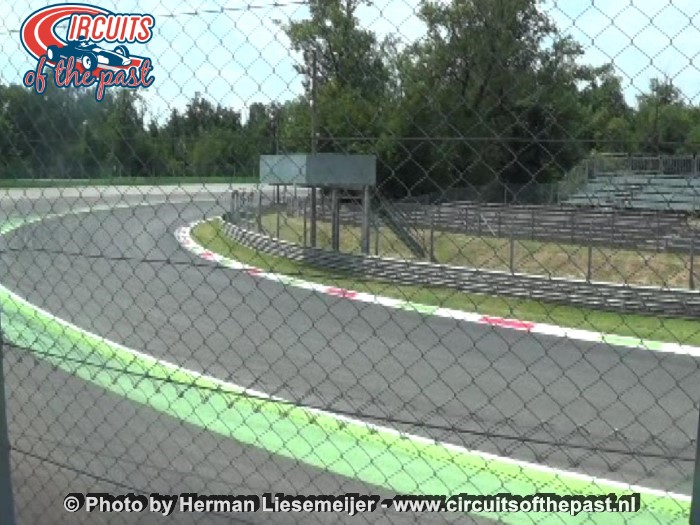
Because they wanted to give the track a length of 10 km like the original, a new corner was designed and built between the central straight and the main straight. To give the central straight the maximum length possible, the corner began with a small radius which increased along its length. Because this corner had a parabolic course, it was called the Curva Parabolica (Parabolic Corner).
In contrast to the original banking, which was built on an earth embankment, the new high speed corners had a concrete structure. They also had a progressive banking, with an angle of 38.69 degrees at the top.
“The 500 Miles of Monza”
Now that Monza had an oval again, the idea came up of letting the European Formula One cars race against the American Indy cars. Under the slogan of “Race of Two Worlds”, the first race took place in 1957. It was a 500 Miles race on the oval only. For this occasion the oval was driven counter-clockwise like usual in the USA.
It was a victory for the American teams, whose cars raced much better on ovals. For the second race, the Formula One teams decided to build special cars for it. But the 1958 race was also won by the Americans. Doubts about safety meant that the 1959 race was cancelled. There would never be more than two of these races
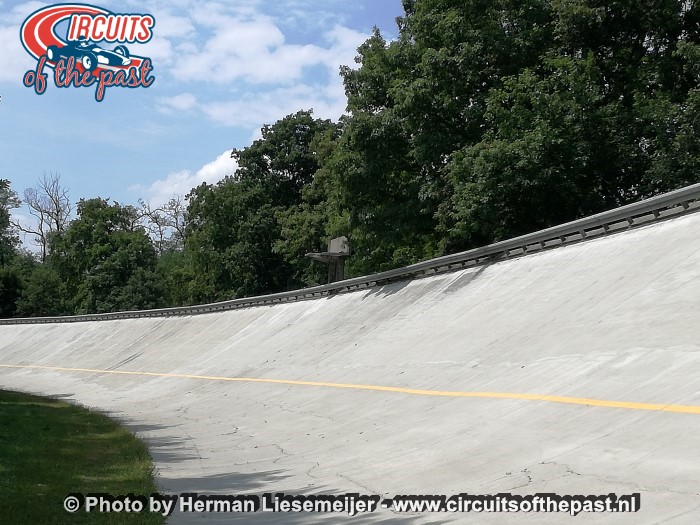
Formula One races at the Monza banking
The complete track, including the oval, was used during the 1955 Italian Grand Prix. This was remarkable, because a massive tragedy happened during the 24 Hours of Le Mans earlier that year.
At that race, one of the Mercedes-Benz race cars crashed and pieces of it were hurled into the crowd. Both the driver and over 80 spectators died. It was the worst accident in motorsport history. As a result of this accident, security measures were tightened and some races were cancelled, while racing in Switzerland was banned entirely. Apparently, the Monza banking was found to be safe enough.
The full circuit was also used for the Italian Grand Prix in 1956. But because of the high G-forces and the banking’s bumpy surface, the tires of several cars were damaged and their drivers experienced some terrifying moments. The organizers thus decided to use only the road circuit for the next few years.
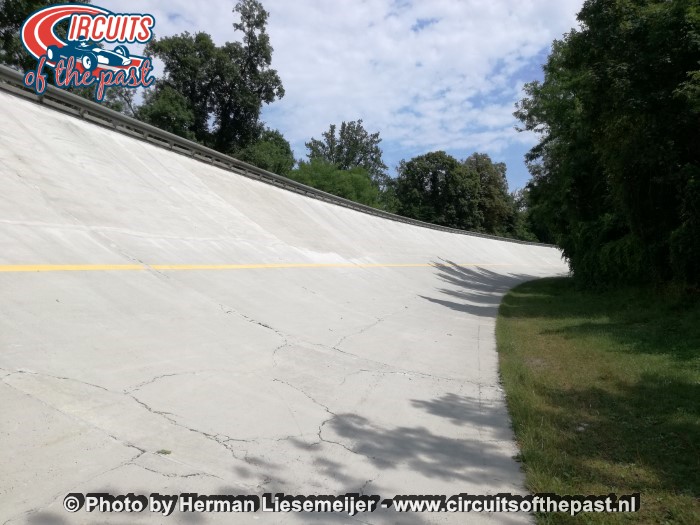
However, in 1960 the full circuit was used again.This was a controversial decision, and some people said it was only to help Ferrari. That year the Ferraris were very slow in the corners but were faster on the straights.
The 10 km long track was also used during the 1961 Italian Grand Prix. That year the engine rules were changed to reduce top speeds. This time everyone agreed to include the oval.
But a tragedy happened during this Grand Prix, a crash took the life of both German driver Wolfgang von Trips and 11 spectators. The crash took place at the end of the central straight, just before the Parabolica. It resulted in stricter safety requirements again. From now on, the banking would no longer be used in Formula One races.
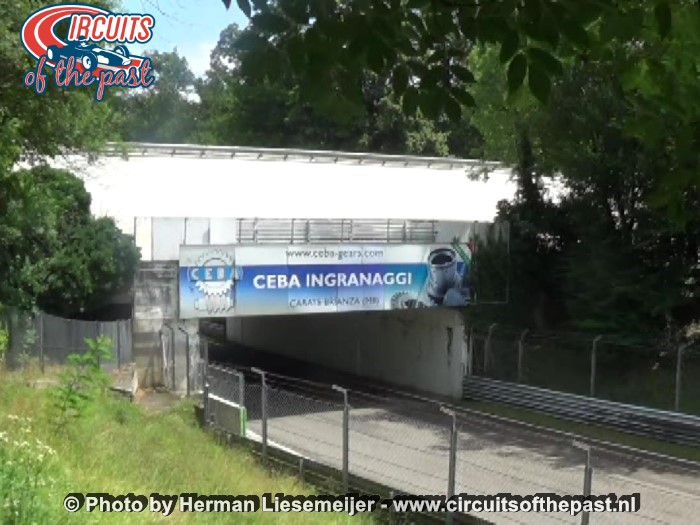
Grand Prix
Remarkably, the Monza banking owes a lot of its fame to the 1966 movie “Grand Prix”. In this movie, a fictional Formula One season takes place, using the Monza banking five years after the last time it was used in real life.
The end of the Monza Oval
Although the Monza banking was forbidden in Formula One races since 1962, it was still used for the 1000 Kilometers of Monza for sports cars. In order to improve safety, two permanent chicanes were added in 1966 for the entry into both high-speed banked corners. Despite this, the Monza oval was used for the last time in 1969.
It was found to be too dangerous, and from 1970 on the 1000 Kilometers of Monza was held only on the road circuit. After the 1969 race, the high-speed circuit layout wasn’t used anymore. The banking fell into disuse and was no longer maintained. No one seemed to have any interest in the fate of this important piece of motorsport history.
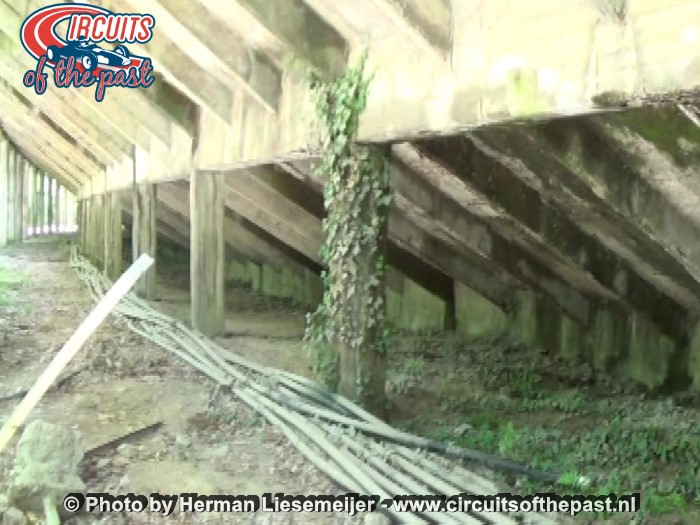
The planned demolition of the Monza banking
After the tragedies during the 1994 San Marino Grand Prix at Imola (where Ayrton Senna and Roland Ratzenberger lost their lives), Formula One was in a state of shock. As a result, the calls for more safety only increased.
This led to hasty adjustments to different circuits. In Monza, it resulted in the reconstruction of the second Lesmo Corner. In the following years, safety requirements increased more and more. For Monza, this is a big problem because it is in the middle of a park with protected trees.
In the late 1990s they came up with the plan to demolish the old banking and plant trees in its place. This way they could chop down trees around the track to create bigger run-off areas. But this time people cared about the old high-speed track. After a massive protest of Formula One drivers and fans, they decided to refrain from this plan. For the trees, another compromise was decided on and the banking was saved.
The Monza Oval now
Since 1978 the Monza Rally has been organized on and around the track. They also use the lower part of the oval. It’s the only time each year that engines can be heard roaring around this loop. The rest of the year the oval is closed for motor vehicles and can be only entered by foot or with a bicycle.
Today Monza cares more about the historic banking. In 2014, the surface was repaved. If you visit the Autodromo Nazionale di Monza you can walk on the old oval or rent a bike at the infopoint. I did it in the summer of 2017, as you can see in the video above.
© Text, Photos & video: Herman Liesemeijer
Subscribe to our YouTube Channel: youtube.com/circuitsofthepast


